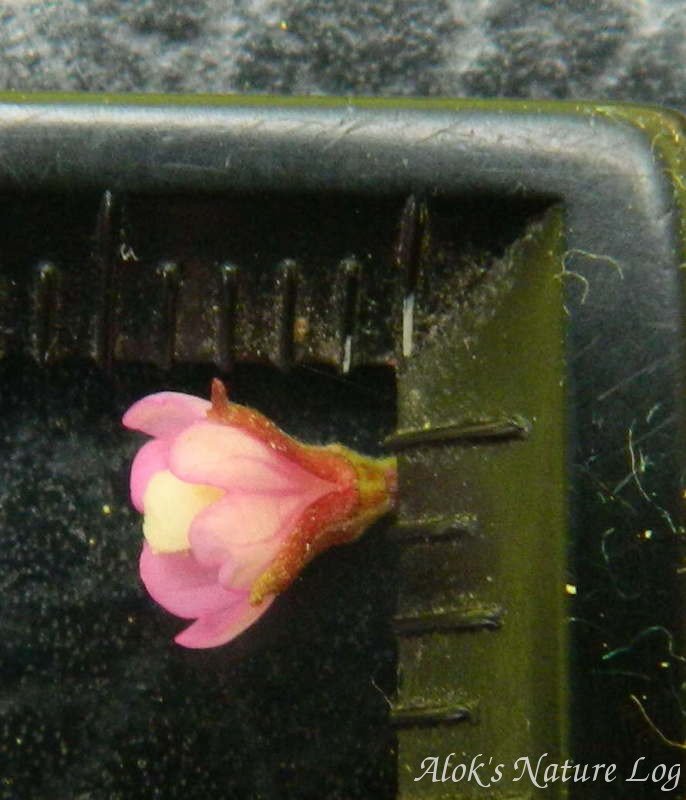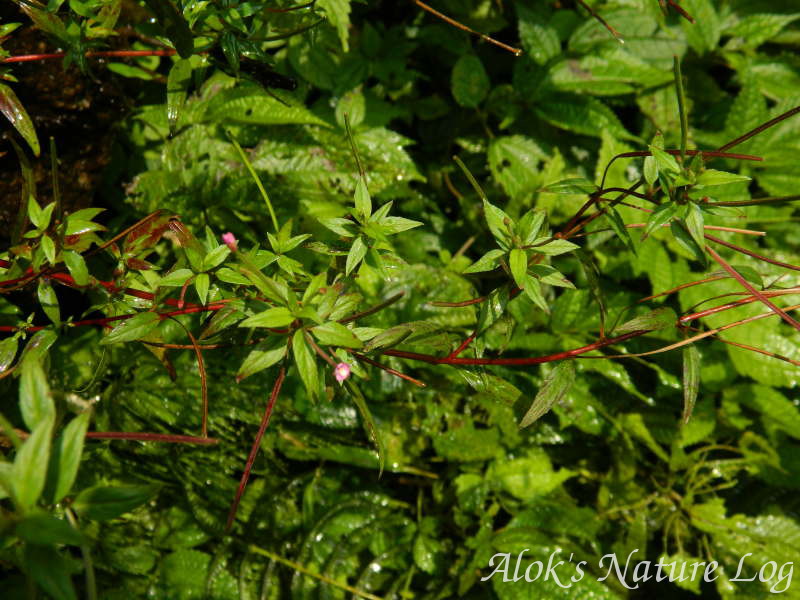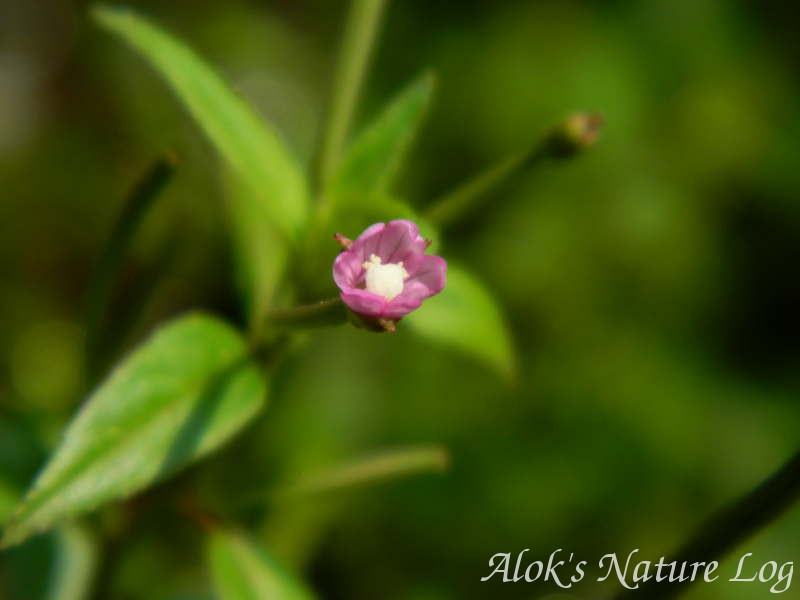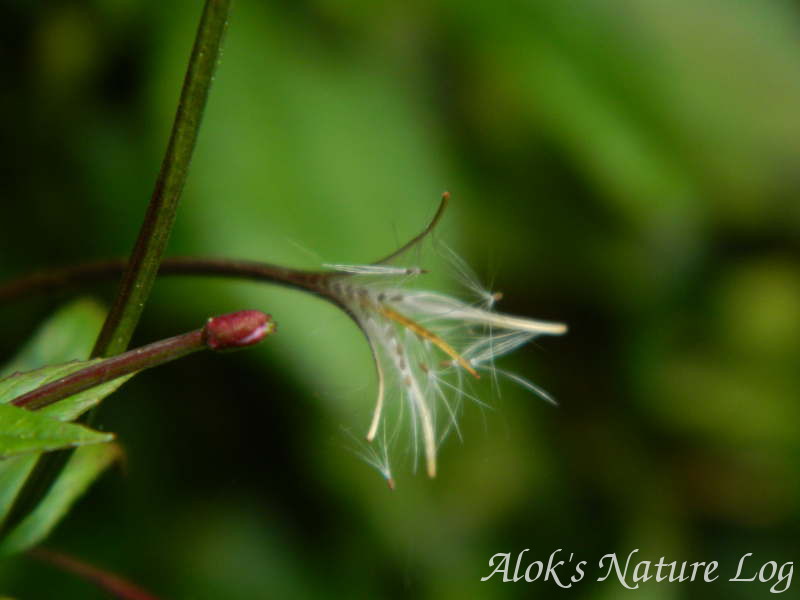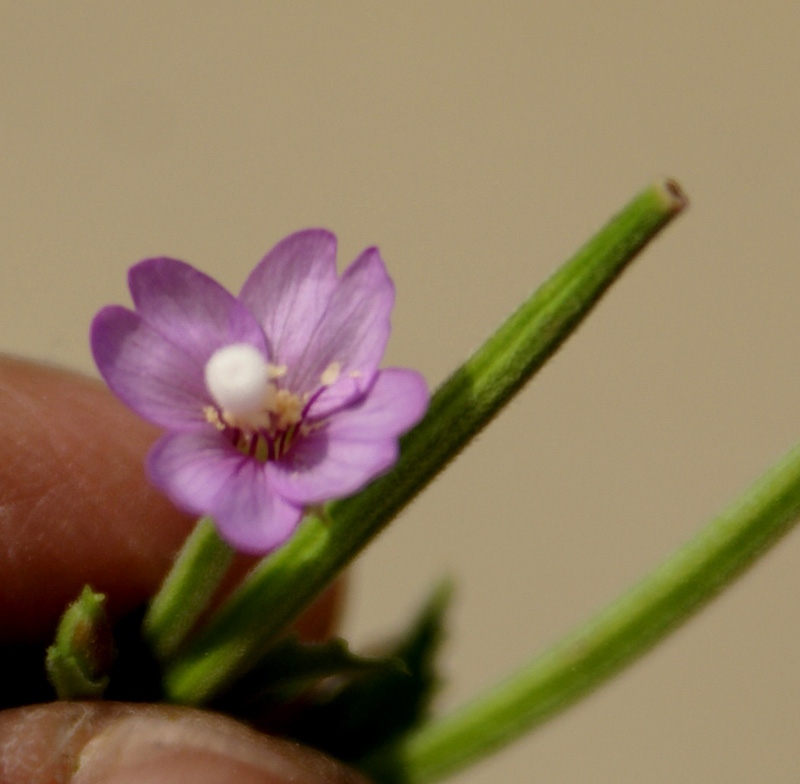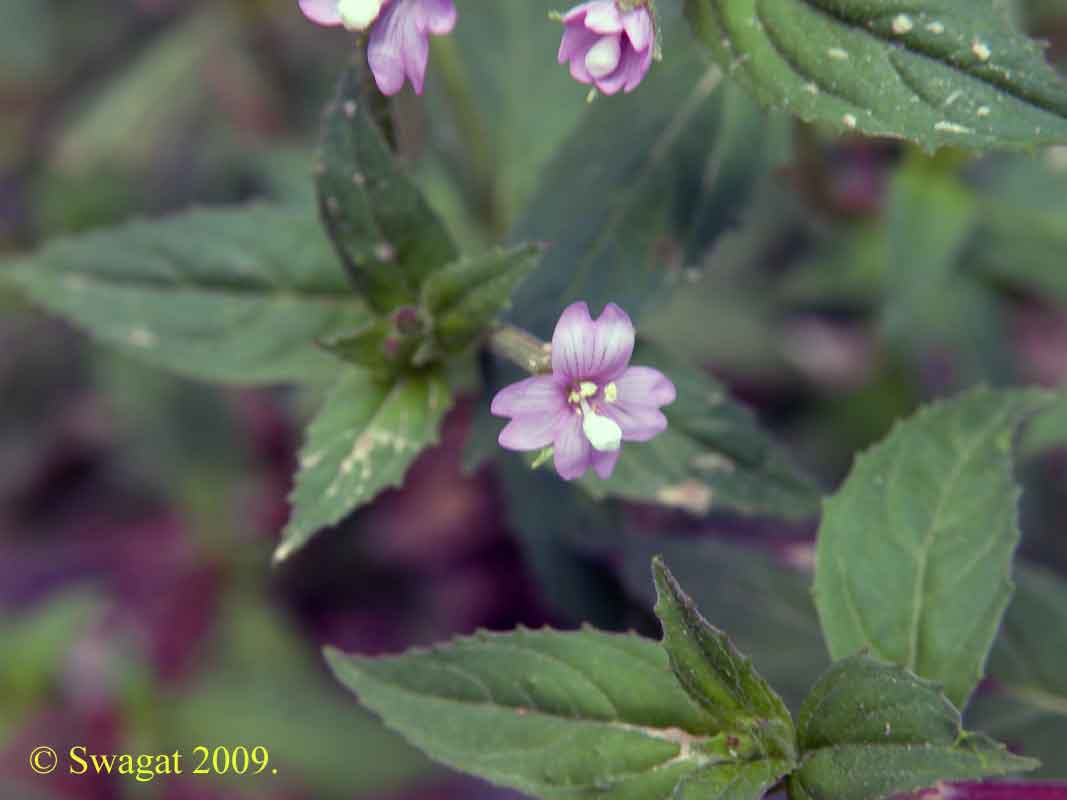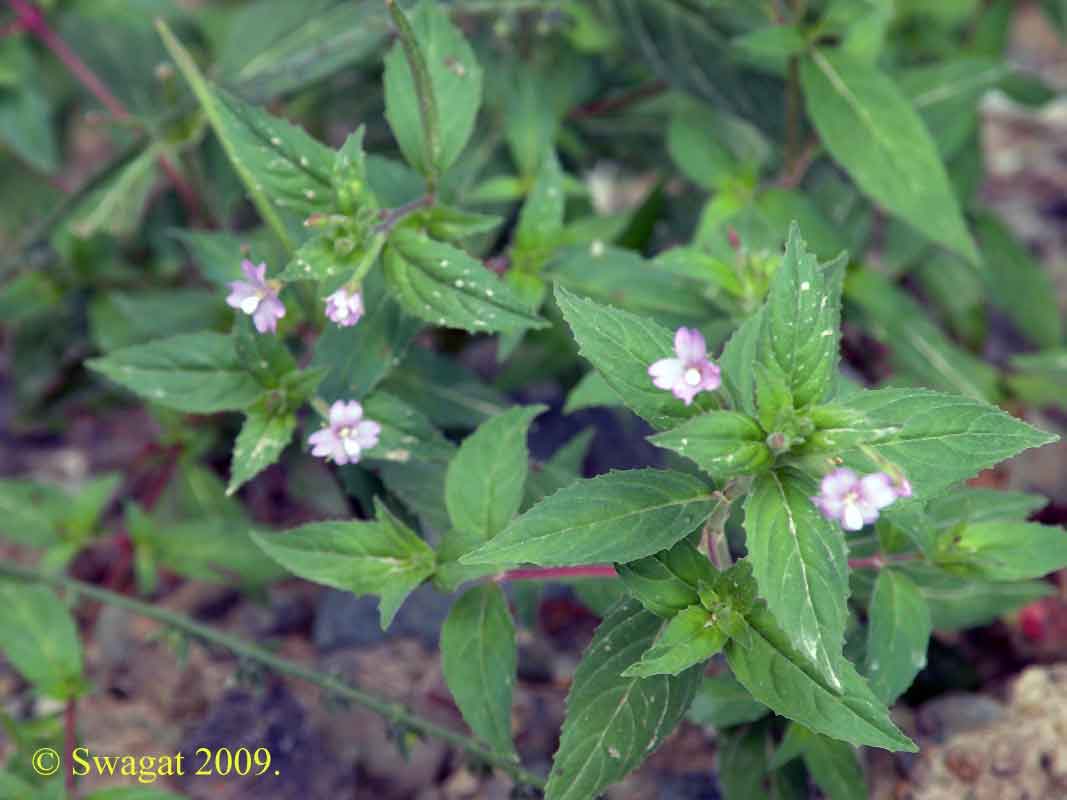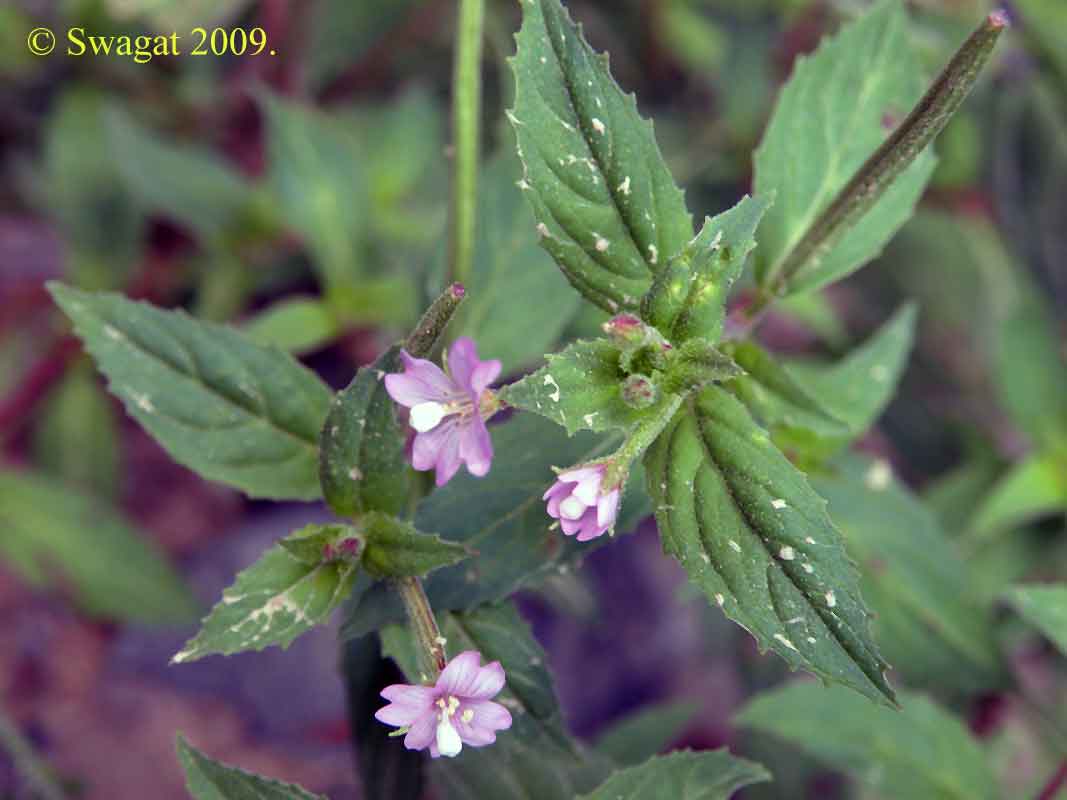|
Epilobium royleanum Hausskn., Oesterr. Bot. Z. 29: 55 1879. (Syn: Epilobium himalayense Hausskn.; Epilobium lividum Hausskn.; Epilobium roseum var. dalhousieanum C.B.Clarke; Epilobium roseum var. indicum C.B.Clarke; Epilobium royleanum f. glabrum P.H. Raven; Epilobium royleanum f. glandulosum P.H. Raven);
.
China (Gansu, Guizhou, Henan, Hubei, Qinghai, Shaanxi, Sichuan, Xinjiang, Yunnan), Tibet, India, Assam, Nepal, Afghanistan (Kunar / Nuristan, Parwan), Pakistan (Kurram, Chitral, Swat, Hazara, Murree), Pakistani Kashmir (Gilgit, Astor, Baltistan), Jammu & Kashmir (Kashmir, Nubra), Sikkim, Bhutan as per Catalogue of Life;
.
Afghanistan, Himalaya (Kashmir to Sikkim), Tibet, Assam, W. China as per Annotated checklist of Flowering plants of Nepal;
.
Ascending or erect herb with fleshy basal soboles that leave dark scales on stem; stems 10-65cm, simple or much-branched above, densely appressed stiffly hairy all around, rarely with glandular hairs, or rarely subglabrous, without lines. Leaves narrowly ovate to lanceolate, 2-7 x 1-3cm, acute, base attenuate to cuneate, appressed stiffly hairy on veins and margins , densely serrulate; petioles 2-8mm, slightly clasping. Inflorescent suberect; pedicels 0.3-0.8cm; flowers erect. Floral tube with ring of hairs within. Sepals 3.5-5.5 x 1-1.8mm. Petals rose-purple to pink, 4-7 x 2.5-3mm, apicalnotch 1mm. Ovaries densely appressed stiffly hairy and sometimes glandular, 2-3cm; styles 2-3.5mm; stigma subcapitate. capsules 4-7cm, appressed stiffly hairy, on pedicels 0.4-1cm. Seeds obovoid, 0.8-1.2 x 0.3-0.45mm, pappilose; tuft of hairs dull white, easily detached. Fl. July-October
Moist weedy places in mountains, near streams and roadsides.
(Attributions- A.C.J Grierson & D.G Long. Flora of Bhutan. Published by RBGE. 1991 from Bhutan Biodiversity Portal)
. Vof Week: Epilobium laxum from Valley: 6 images. Good photographs … Superb. Liked the photographs. I think close to Epilobium royleanum Hausskn. rather than Epilobium laxum as per
Location Kalatope, Chamba Perhaps Epilobium parviflorum Yes sir, it could be… Thank you I think more closer to images at Epilobium royleanum Hausskn. rather than those at Epilobium parviflorum Schreb. Epilobium royleanum Hausskn., Oesterr. Bot. Z. 29: 55. 1879;
syn: Epilobium roseum Schreb. var. dalhousieanum Clarke
Perennial herb with uniformly hairy or subglabrous stems; leaves ovate-lanceolate, usually less than 7 cm long, closely serrulate, acute at tip, with distinct 2-6 mm long petiole; flowers rosy to pink with bilobed petals; stigma large and broadly clavate to capitate; capsule usually shorter than 6 cm, some what clustered.
Photographed from Gulmarg, Kashmir in July SK105SEP18-1016:ID : 4 posts by 3 authors. Attachments (3)
Sharing some pictures for ID shot at Nubra Valley on 22 August 2014.
My guess is some Epilobium sp. Certainly an Epilobium species. But to reach to exact ID is difficult to me. Clearly an Epilobium but another difficult genus. There are a number of similar-looking, small-flowered willowherbs found in Ladakh of which I understand E.royleanum to be the commonest. However, things are not simple. Excuse the lengthy comments which follow. The two most distinctive ‘Epilobiums’ found in Ladakh are now within the genus Chamerion (at one time spelt Chamaernerion):
Chamerion angustifolium known in the UK as ‘Rosebay Willow Herb’ or ‘Fireweed’ – known in N.America as ‘Dwarf Fireweed’ or ‘River Beauty Willowherb’ is gregarious by alpine watercourses. In ‘The New of the British Isles’ Stace keys Chamerion from Epilobium on the basis of all the leaves being alternate, flowers held horizontally, slightly zygomorphic, whereas in Epilobium at least the lowest leaves are opposite, flowers +/- erect when open, actinomorphic. There are other differences.
Stace also observes for the genus Epilobium (in the UK), “Plants vary greatly in stature, leaf-size and degree of branching and
of pubescence but the type of hairs and certain aspects of leaf-shape are relatively constant. Seed coat ornamentation is highly diagnostic, as is the presence of a terminal appendage, but a high magnification (x> 20) is required”.
Unless seeds are present (most Epilobiums are photographed when in flower) this characteristic cannot be used to distinguish between closely related species and even if one examined the plants with a good hands lens, the magnification may not be sufficient to check the detail. This means in some cases pressed specimens which can be examined under a higher magnification binocular microscope may well be required to be certain, identification-wise.
Stace also observes (for UK Epilobiums) that hybrids occur commonly where 2 or more species occur together, especially in quantity for several years in disturbed ground…..
So one can see this is rather complicated! The images shared do not show much detail (the flowers are only in bud, not open). Sometimes insufficient detail is visible from even the best, perfectly in focus close-ups – which is why some plant taxonomists specialising in particular genera or families require quality pressed specimen to provide a reliable identifications.
Anyhow, what are the possibilities as to the species of Epilobium in Ladakh? Stewart (‘An Annotated Catalogue of the Vascular Plants of Pakistan & Kashmir’ 1972) lists 6 Epilobiums from Ladakh, whereas the most up-to-date checklist for Ladakh by Klimes & Dickore lists 12…. ‘Flowers of the Himalaya’ describe 7 (now 5) of c. 23 spp. but probably more are recognised from the Himalaya nowadays.
Klimes (a Czech Republic botanist who undertook excellent field work in Ladakh but sadly went missing and has not been found) lists 5 species in what he described as ‘lower’ Ladakh (meaning the places he explored that were not at high altitude). Of these, I understand E.royleanum to be the most widespread with specimens found in eroded stream banks, emerged bottoms, springs & irrigation channels. Stewart recorded it as very common, chiefly in the temperate zone of N.Pakistan and Kashmir with a 19th Century record in Nubra.
The images posted do look close to the 2 small photos of E.royleanum in ‘Himalayan Plants Illustrated’ (Yoshida, 2005) but this book also has photos of E.tibetanum – not that I could distinguish between the two on the basis of the photos.
I do have a copy of the revision of ONAGRACEAE, the family to which Epilobium belongs, for ‘Flora of Pakistan’ (which I cannot locate at
present but will check latter). But not sure if it will help much or is fully up-to-date. There is the e-flora for Pakistan but this does not contain all the detail within the printed versions. RELYING UPON KEYS ONLY TO DISTINGUISH BETWEEN SPECIES DOES NOT ALWAYS BRING A RELIABLE IDENTIFICATION.
This is all I can do for the present, perhaps there is someone with specialist knowledge of Epilobium who can say with confidence which species the images are of? I cannot at this point – sometimes it is just not possible to tell similar species apart on the basis of photos which do not show sufficient detail – or the genus needs further study.
Location: Kalinchowk, Dolakha, Nepal
Altitude: 12000 ft.
Date: 25 July 2014
Epilobium ?? I am closing on into Epilobium laxum Royle (accepted name) or Epilobium royleanum Hausskn. (accepted name). Need your help for validation.
See my previous comments about the difficulties naming Epilobiums. I think more closer to images at Epilobium royleanum Hausskn. rather than those at Epilobium laxum Royle
Plant for ID from Paddar valley J&K: 221111 SRANA 02: Request for Identification:
Date: 1st August 2011
Location: Paddar valley district Kishtwar J&K.
Altitude: 2321 meters asl
Plant habit/habitat: Wild herb
Plant height: 20-40 cm Close up of flower and fruits needed for further help Epilobium sp., close up for further study Can it be Epilobium royleanum
Kindly check the link below
http://www.efloras.org/florataxon.aspx?flora_id=110&taxon_id=240010118 Yes … Epilobium royleanum is a possibility, but you have to check hairs. Stem has to be hairy all round. No two hairy lines. Epilobium for ID :: Ghangaria-Hemkund, Uttarakhand :: Aug 2018 :: ARKDEC-09 : 2 posts by 2 authors. Attachments (1)
Saw this Epilobium along the Ghangaria-Hemkubd trail, Uttarakhand in Aug 2018. Requested to please provide ID. The fruit pods were quiet tall.
Pl. check
To me appears close.
.
  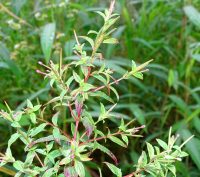 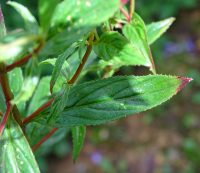  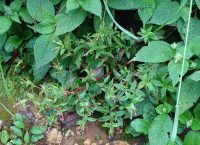  SK 3857 17 September 2023: Location: Phulchoki, Lalitpur, Nepal
Date: 26 August 2023
Altitude: 2631 m.
Habitat : Wild Epilobium royleanum Hausskn. ??
Looks close, but elevation looks different from What are the species reported from the area?
Elevation range is 1600-4100m. according to the new book and 1400-3300(-4300) m. according to efloras. Ok . References:
|
Epilobium royleanum
Updated on December 24, 2024

